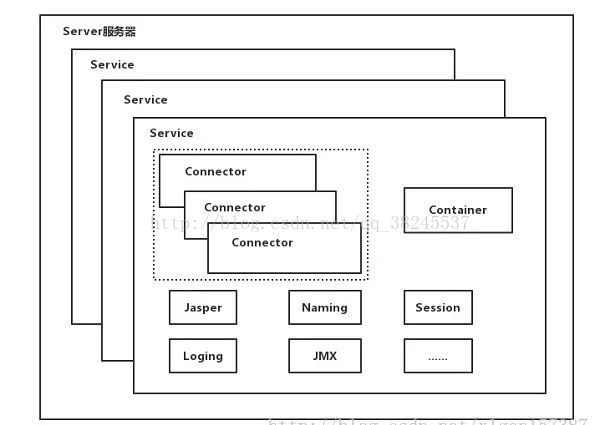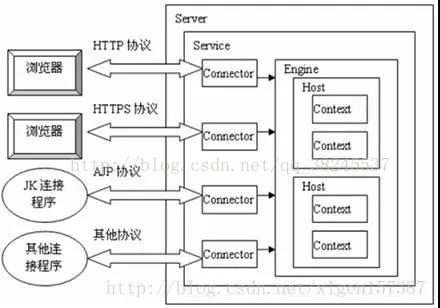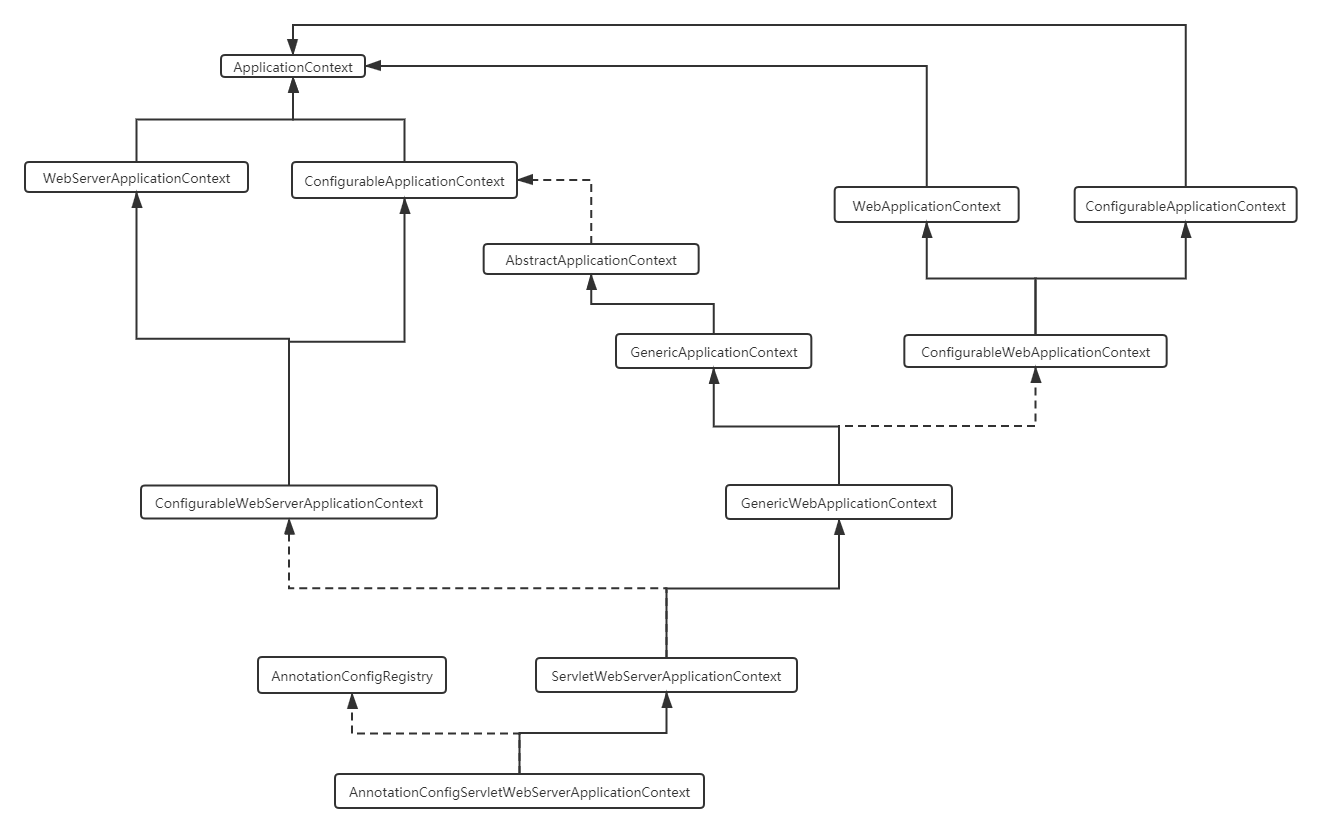1.引言
现在JavaEE开发基本离不开spring全家桶,spring面世以来极大地简化了开发过程和代码量,但是随着spring版本迭代,功能越来越丰富和强大,带来的问题就是有大量的配置文件需要去开发人员去编写 ,所以springboot 应运而生,springboot 的理念是约定大于配置,极大地缩减了配置文件的量,借助springboot的自动配置甚至可以实现0配置,快速搭建项目,同时另外一个亮点就是内置servlet容器,不用再将代码打成war包,然后再去部署到tomcat,再启动tomcat,直接将项目打成jar包启动,也是特别方便。
2.内置servlet容器的使用方法
(1)使用约定的也就是默认的容器。默认使用的是tomcat,只需要引入web的依赖就可以自动使用Tomcat作为默认的servlet容器启动项目
<dependency>
<groupId>org.springframework.boot</groupId>
<artifactId>spring-boot-starter-web</artifactId>
</dependency>
(2)使用其他的内置容器
除了tomcat ,springboot 还支持Undertow 和 Jetty,并且可以快速切换成任意一个。做法是排除tomcat,引入想要用的容器jar包
<dependency>
<groupId>org.springframework.boot</groupId>
<artifactId>spring-boot-starter-web</artifactId>
<exclusions>
<exclusion>
<groupId>org.springframework.boot</groupId>
<artifactId>spring-boot-starter-tomcat</artifactId>
</exclusion>
</exclusions>
</dependency>
<dependency>
<groupId>org.springframework.boot</groupId>
<artifactId>spring-boot-starter-undertow</artifactId>
</dependency>
<dependency>
<groupId>org.springframework.boot</groupId>
<artifactId>spring-boot-starter-web</artifactId>
<exclusions>
<exclusion>
<groupId>org.springframework.boot</groupId>
<artifactId>spring-boot-starter-tomcat</artifactId>
</exclusion>
</exclusions>
</dependency>
<dependency>
<groupId>org.springframework.boot</groupId>
<artifactId>spring-boot-starter-jetty</artifactId>
</dependency>
(3)不使用内置容器
<dependency>
<groupId>org.springframework.boot</groupId>
<artifactId>spring-boot-starter-web</artifactId>
<!-- 移除嵌入式tomcat插件 -->
<exclusions>
<exclusion>
<groupId>org.springframework.boot</groupId>
<artifactId>spring-boot-starter-tomcat</artifactId>
</exclusion>
</exclusions>
</dependency>
<!--添加servlet-api依赖--->
<dependency>
<groupId>javax.servlet</groupId>
<artifactId>javax.servlet-api</artifactId>
<version>3.1.0</version>
<scope>provided</scope>
</dependency>
3.Tomcat 基本结构及其用

Tomcat中最顶层的容器是Server,代表着整个服务器,从上图中可以看出,一个Server可以包含至少一个Service,用于具体提供服务。Service主要包含两个部分:Connector和Container,是tomcat的核心。Connector用于处理连接相关的事情,并提供Socket与Request和Response相关的转化,Container用于封装和管理Servlet,以及具体处理Request请求。
一个Tomcat中只有一个Server,一个Server可以包含多个Service,一个Service只有一个Container,但是可以有多个Connectors,这是因为一个服务可以有多个连接,如同时提供Http和Https链接,也可以提供向相同协议不同端口的连接

多个 Connector 和一个 Container 就形成了一个 Service,有了 Service 就可以对外提供服务了,但是 Service必须依赖server 生存,所以整个 Tomcat 的生命周期由 Server 控制。

4.内置Tomcat启动流程
tomcat 的启动需要从main 函数入手,main 函数的run方法实际调用的是 SpringApplication 的run 方法
public ConfigurableApplicationContext run(String... args) { StopWatch stopWatch = new StopWatch(); stopWatch.start(); ConfigurableApplicationContext context = null; Collection<SpringBootExceptionReporter> exceptionReporters = new ArrayList<>(); configureHeadlessProperty(); //获取应用启动的事件监听器 SpringApplicationRunListeners listeners = getRunListeners(args); // 发布了一个spring应用启动事件 listeners.starting(); try { ApplicationArguments applicationArguments = new DefaultApplicationArguments(args); // 准备应用启动环境(StandardServletEnviroment) ConfigurableEnvironment environment = prepareEnvironment(listeners, applicationArguments); configureIgnoreBeanInfo(environment); //打印启动banner Banner printedBanner = printBanner(environment); // 根据条件创建applicationContext,这里创建的是AnnotationConfigServletWebServerApplicationContext context = createApplicationContext(); exceptionReporters = getSpringFactoriesInstances(SpringBootExceptionReporter.class, new Class[] { ConfigurableApplicationContext.class }, context); prepareContext(context, environment, listeners, applicationArguments, printedBanner); //刷新上下文 refreshContext(context); //再次刷新上下文 afterRefresh(context, applicationArguments); stopWatch.stop(); if (this.logStartupInfo) { new StartupInfoLogger(this.mainApplicationClass).logStarted(getApplicationLog(), stopWatch); } listeners.started(context); callRunners(context, applicationArguments); } catch (Throwable ex) { handleRunFailure(context, ex, exceptionReporters, listeners); throw new IllegalStateException(ex); } try { listeners.running(context); } catch (Throwable ex) { handleRunFailure(context, ex, exceptionReporters, null); throw new IllegalStateException(ex); } return context; }
createApplicationContext(); 创建了一个 AnnotationConfigServletWebServerApplicationContext 这个context 是注解版的servletContext ,它的本质还是applicationContext,继承和实现关系如下

接下来执行refreshContext,刷新上下文,调用的是AbstractApplicationContext的refresh,这个方法已经不是在springboot 的包内了,而是在spring 中了,这个启动流程是一个模板方法
public void refresh() throws BeansException, IllegalStateException { synchronized(this.startupShutdownMonitor) { this.prepareRefresh(); // 获取beanFactory,这个就是springIoc容器的祖先 ConfigurableListableBeanFactory beanFactory = this.obtainFreshBeanFactory(); this.prepareBeanFactory(beanFactory); try { //为容器子类添加特殊的postprocess this.postProcessBeanFactory(beanFactory); //执行postprocess this.invokeBeanFactoryPostProcessors(beanFactory); // 为Bean 添加后置处理器 this.registerBeanPostProcessors(beanFactory); // 初始化国际化信息源 this.initMessageSource(); //初始化时间传播器 this.initApplicationEventMulticaster(); // 刷新,这个方法是留给子类扩展使用的,tomcat的启动就在这里执行 this.onRefresh(); //注册时间监听器 this.registerListeners(); //初始化单实例Bean,循环依赖,后置处理器,initMethod,awear 接口的实现,自动装配,都在这里完成,boot 在这里加载了一些默认的bean,mvc相关的,条件注解相关的,共26个 this.finishBeanFactoryInitialization(beanFactory); //初始化和发布Bean的生命周期事件 this.finishRefresh(); } catch (BeansException var9) { if (this.logger.isWarnEnabled()) { this.logger.warn("Exception encountered during context initialization - cancelling refresh attempt: " + var9); } this.destroyBeans(); this.cancelRefresh(var9); throw var9; } finally { this.resetCommonCaches(); } } }
接下来重点看onRefresh如何启动tomcat,子类ServletWebServerApplicationContext 复写了这个方法
protected void onRefresh() { super.onRefresh(); try { createWebServer(); } catch (Throwable ex) { throw new ApplicationContextException("Unable to start web server", ex); } }
createWebServer
private void createWebServer() { WebServer webServer = this.webServer; ServletContext servletContext = getServletContext(); if (webServer == null && servletContext == null) { ServletWebServerFactory factory = getWebServerFactory(); this.webServer = factory.getWebServer(getSelfInitializer()); } else if (servletContext != null) { try { getSelfInitializer().onStartup(servletContext); } catch (ServletException ex) { throw new ApplicationContextException("Cannot initialize servlet context", ex); } } initPropertySources(); }
先获取ServletWebServerFactory,然后通过工厂获取具体的webServer,此时获取的是TomcatServletWebServerFactory,同时这个接口的实现还有undertow和jetty的工厂。getWebServer 实现如下
public WebServer getWebServer(ServletContextInitializer... initializers) { if (this.disableMBeanRegistry) { Registry.disableRegistry(); } Tomcat tomcat = new Tomcat(); File baseDir = (this.baseDirectory != null) ? this.baseDirectory : createTempDir("tomcat"); tomcat.setBaseDir(baseDir.getAbsolutePath()); Connector connector = new Connector(this.protocol); connector.setThrowOnFailure(true); tomcat.getService().addConnector(connector); customizeConnector(connector); tomcat.setConnector(connector); tomcat.getHost().setAutoDeploy(false); configureEngine(tomcat.getEngine()); for (Connector additionalConnector : this.additionalTomcatConnectors) { tomcat.getService().addConnector(additionalConnector); } prepareContext(tomcat.getHost(), initializers); return getTomcatWebServer(tomcat); }
主要就是创建tomcat 的server,service,connector,engine 这些核心组件,然后调用 getTomcatWebServer,初始化和启动tomcat,
private void initialize() throws WebServerException { logger.info("Tomcat initialized with port(s): " + getPortsDescription(false)); synchronized (this.monitor) { try { addInstanceIdToEngineName(); Context context = findContext(); context.addLifecycleListener((event) -> { if (context.equals(event.getSource()) && Lifecycle.START_EVENT.equals(event.getType())) { // Remove service connectors so that protocol binding doesn't // happen when the service is started. removeServiceConnectors(); } }); // Start the server to trigger initialization listeners this.tomcat.start(); // We can re-throw failure exception directly in the main thread rethrowDeferredStartupExceptions(); try { ContextBindings.bindClassLoader(context, context.getNamingToken(), getClass().getClassLoader()); } catch (NamingException ex) { // Naming is not enabled. Continue } // Unlike Jetty, all Tomcat threads are daemon threads. We create a // blocking non-daemon to stop immediate shutdown startDaemonAwaitThread(); } catch (Exception ex) { stopSilently(); destroySilently(); throw new WebServerException("Unable to start embedded Tomcat", ex); } } }
最后执行模板方法的最后一步finishRefresh,这个方法也被子类ServletWebServerApplicationContext复写了,
protected void finishRefresh() { super.finishRefresh(); WebServer webServer = startWebServer(); if (webServer != null) { publishEvent(new ServletWebServerInitializedEvent(webServer, this)); } }
private WebServer startWebServer() { WebServer webServer = this.webServer; if (webServer != null) { webServer.start(); } return webServer; }
此时tomcat 还没有真正启动,当执行webServer.start()时会找到context ,并且load,此时才算项目启动了
public void start() throws WebServerException { synchronized (this.monitor) { if (this.started) { return; } try { addPreviouslyRemovedConnectors(); Connector connector = this.tomcat.getConnector(); if (connector != null && this.autoStart) { performDeferredLoadOnStartup(); } checkThatConnectorsHaveStarted(); this.started = true; logger.info("Tomcat started on port(s): " + getPortsDescription(true) + " with context path '" + getContextPath() + "'"); } catch (ConnectorStartFailedException ex) { stopSilently(); throw ex; } catch (Exception ex) { if (findBindException(ex) != null) { throw new PortInUseException(this.tomcat.getConnector().getPort()); } throw new WebServerException("Unable to start embedded Tomcat server", ex); } finally { Context context = findContext(); ContextBindings.unbindClassLoader(context, context.getNamingToken(), getClass().getClassLoader()); } } }
最后再到main函数的
listeners.started(context);
callRunners(context, applicationArguments);
这两个方法,分别执行容器启动的监听器的回调,和执行 ApplicationRunner 和 ApplicationRunner 这些类型Bean的调用。至此基本描述了springboot 中tomcat 的启动过程,顺带些了一下spring Ioc容器的启动流程。